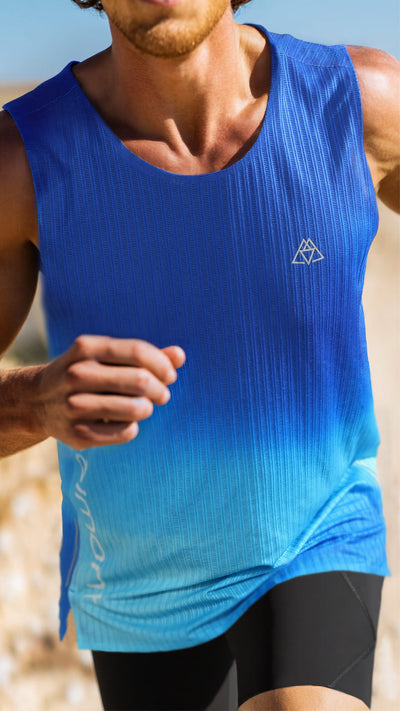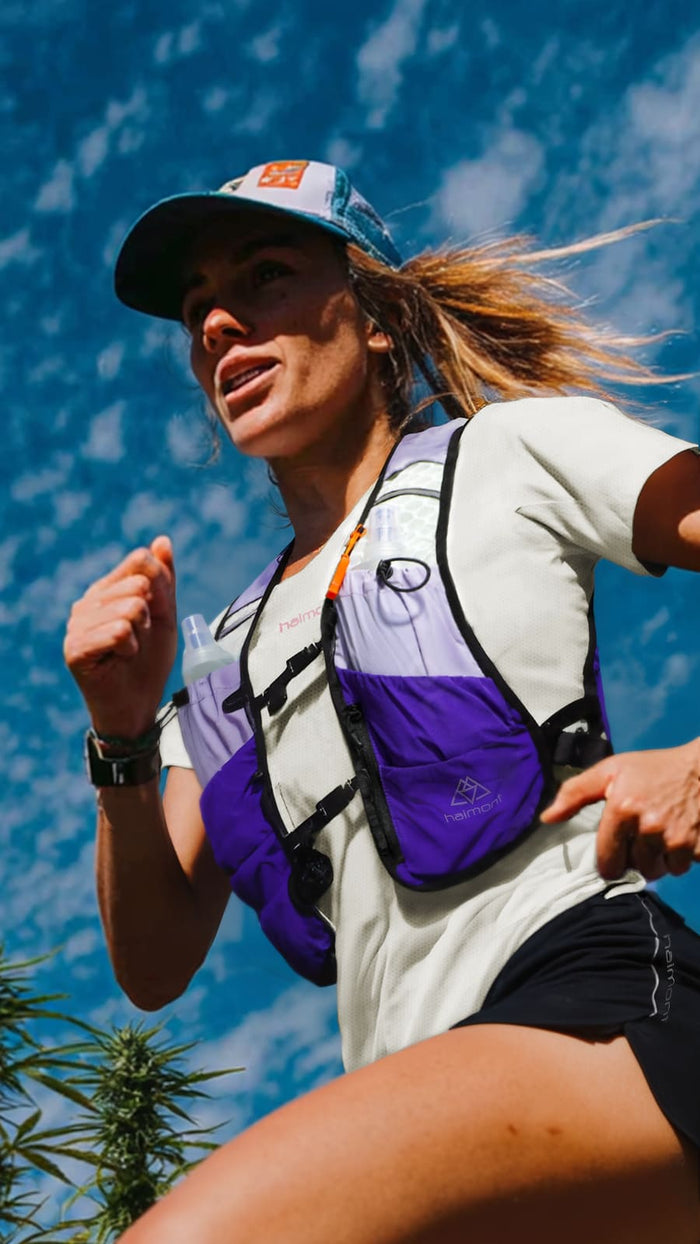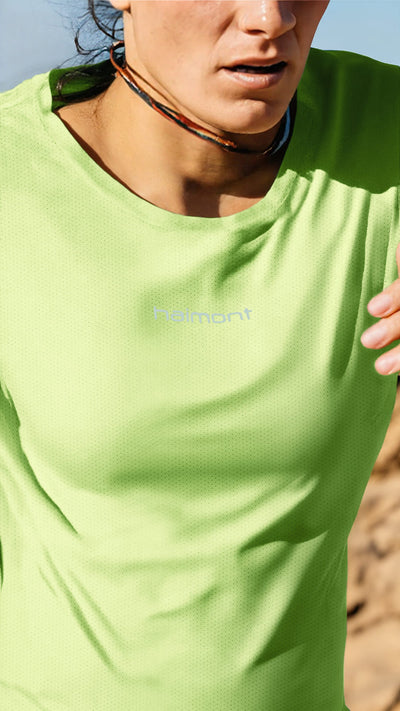As September descends upon the Scottish Highlands, the landscape undergoes a dramatic transformation. Mist lingers in the morning air, autumn sunlight glistens across the ridges, heather blooms in a haze of purple, and amber light flickers across winding crests as the first chill brushes bare ground. It is a season of grandeur—but also of brutality. Sunshine can vanish in a heartbeat, rain pours without warning, and mountain paths dissolve into mist.
It is here, in this dramatic setting, that Skyline Scotland unfolds—widely regarded as one of the most technically demanding and iconic skyrunning festivals in the world.
Event Overview — A Highland Feast of Endurance
First launched in 2015 with the legendary Glen Coe Skyline®, Skyline Scotland immediately set itself apart by emphasizing technical, alpine-style terrain—rare on British soil. Over the years, the festival has expanded to include the Ben Nevis Ultra, Ring of Steall, and the Mamores VK, while steadily building international prestige.
From a single race, Skyline Scotland has grown into a multi-day international event, now attracting more than 2,000 runners from 40–50 countries each year ( Skyline Scotland Official ).

Terrain & Skills Demanded
- Steep grassy slopes (slick and draining)
- Loose scree and boulder fields (ankle-snapping hazards)
- Bog crossings and rivers ( energy-sapping )
- Huge vertical gain (thousands of meters compressed into short distances)
- Knife-edge ridges and scrambles (Aonach Eagach, CMD Arête, Curved Ridge) require confidence with exposure
Key skills: strong climbing endurance, technical downhill ability, advanced navigation in mist, and above all—mental resilience.
Runner's Guide — Entry, Gear & Strategy
Entry Requirements
Technical races like Glen Coe Skyline® and Ben Nevis Ultra require evidence of prior scrambling or skyrunning experience—race results, GPX logs, or references from directors of comparable alpine events.
Mandatory Kit
The official equipment list is updated annually and may be adjusted based on weather conditions. The core items required according to the latest official equipment list ( MANDATORY KIT LIST 2025 )typically include:
- Waterproof jacket & pants (taped seams, breathable)
- Running vest/pack
- Warm base layer, hat, gloves
- Map, compass, and organizer-issued GPS tracker
- Emergency blanket & whistle
- Adequate fluids and nutrition
- Aggressive trail shoes (sticky rubber recommended for slick rock and ridges)

One of the most important gear choices is a running vest. A low-quality pack can easily bounce, rub, or shift your center of gravity while climbing or descending.
The Haimont running vest is an excellent choice:
- It's lightweight and snug, minimizing bounce on climbs.
- It has ample room for essential gear (a 2L hydration bladder, two 500ml hydration bottles, a midlayer, a waterproof jacket, a hat, gloves, a headlamp, and gels).
- It evenly distributes weight across your chest and back, effectively reducing the burden.
- The convenient storage allows you to refuel mid-climb without interrupting your stride.
In Scotland's rugged terrain, a stable, lightweight vest can mean the difference between smooth progress and avoiding wasted energy.
Tactics & Training
Pacing
Skyline Scotland is famous not just for its beauty and danger, but for the dramatic pacing differences that emerge due to vertical gain, exposure, and technical scrambles.
- 2019 Ben Nevis Ultra: Winner Murray Strain finished the 52 km / ~4,750 m route in 7:51:31, while Katie Kaars Sijpesteijn won the women's in 8:05:28. This translates to an average pace of ~9–10 min/km, despite being only ~50 km—showing how steep climbs and scrambles multiply the effort ( Wikipedia ).
- 2023 Lochaber 80 Ultra: Winner Lachie Ives clocked 8:06for ~80 km, averaging ~6:00 min/km pace—astonishing for such terrain. Yet, mid-pack finishers often dropped to 11–15 min/km on steep climbs and technical descents ( RunABC Report ).
Takeaway
Do not plan based on flat-land pace. Expect your speed to halve (or worse)on steep, technical segments. Smart run-walk strategy and careful downhill pacing are critical.
Run-walk hybrid
On brutal ascents or exposed ridges, conserve energy with deliberate hiking.
Downhill focus
Train eccentric leg strength—descents decide races.
Weather simulation
Practice in rain, wind, and cold. Skyline weather changes in minutes.
Climate Challenges
September in the Highlands is notoriously volatile: heavy rain, gale-force winds, fog, and even snow above 1,000 m. Fog can reduce visibility to just meters, making navigation and mental focus essential. Temperatures swing dramatically—valleys may feel mild, but exposed ridges can be near freezing. Hypothermia is a very real risk: prepare for the worst, hope for the best.

New Rules & Safety for 2025
For 2025, all courses will be fully marked with staffed checkpoints. Still, self-sufficiency remains crucial. Mandatory GPS trackers provide real-time monitoring. Stricter gear checks enhance both safety and spectator engagement. Runners should carefully review the official athlete guide published before race day.
Skyline Scotland 2025 Highlights
As the festival enters a new chapter in 2025, both runners and fans can expect exciting changes that redefine the event—while staying true to its hardcore skyrunning roots.
New Venue: The Nevis Range, Fort William
After nearly a decade in Kinlochleven, the event moves to the Nevis Range resort near Ben Nevis (1,345 m), the UK’s highest peak. The new base offers:
- Better infrastructure for spectators and athletes
- Easier access to iconic terrain like the CMD Arête
- Routes climbing Ben Nevis itself
Seven Redesigned Races
For the first time, seven races will run across the weekend, from beginner-friendly trails to elite-level tests. Highlights include:
- Ben Nevis Skyline— A technical skyrace scaling Ben Nevis and traversing CMD Arête, rivaling Glen Coe Skyline.
- Ring of Steel Reimagined— A fresh route inspired by the classic, featuring soaring ridges and rapid descents.
- Expanded trail distances— Shorter races for recreational and youth runners.
Athletes to Watch
Skyline Scotland has long drawn world-class talent—past champions include Stian Angermund-Vik, Kilian Jornet, and Laura Orgué.
For 2025:
- The Ben Nevis Skyline joins the Golden Trail World Series qualifiers, ensuring elite international competition.
- Local British mountain runners, familiar with Scotland’s unique terrain, will also be strong contenders.
- Expanded race formats may attract new trail runners experiencing skyrunning for the first time.
Safety & Rules Update
- Fully marked routes replace the semi-self-navigation style of earlier Glen Coe races.
- Mandatory GPS trackers ensure real-time safety monitoring.
- Continued collaboration with Lochaber Mountain Rescue and local authorities upholds the balance of extreme adventure and strict safety standards.
Spectator Experience
Thanks to the Nevis Range facilities, 2025 will offer the best-ever fan access:
- Mountain gondola— the UK’s only gondola, taking spectators to mid-mountain viewpoints.
- Event village— live GPS tracking, commentary, and festival atmosphere.
- Course viewpoints— natural amphitheaters like CMD Arête give spectators prime views of athletes tackling technical ridges.
This redesign aims to bring the drama of skyrunning closer to the public than ever before.
Conclusion
Skyline Scotland is not just a race—it’s an exploration of mountain extremes. A raw test of body and spirit, against some of the oldest, harshest landscapes on Earth. It demands awe, respect, preparation, and humility. For mountain runners seeking not just a finish line, but transformation, it may represent the purest, hardest, and most unforgettable expression of trail and skyrunning spirit.
FAQs
Which race is best for beginners?
New to mountain running? Opt for the 10–18 km trail races or the easier Skyline Scotland courses. Strong climbers might also enjoy the Mamores Vertical Kilometer.
How can I get the best spectator experience?
Head to ridge crossings or cols for panoramic views of both the race and the landscape. Use the event village as your base. Arrive early, check maps and forecasts, and plan your approach—some viewpoints require hiking.
How does Skyline Scotland compare to UTMB or other major trail races?
UTMB emphasizes ultra-long distances across alpine terrain. Skyline Scotland, by contrast, focuses on technicality: steep ridges, scrambles, and abrupt vertical gain. In some Skyline events, the “sky” factor—exposure, altitude, and openness—is far more pronounced.
How much does September weather impact the race?
Enormously. Expect rapid shifts from sunshine to drizzle, clear skies to fog. Even in “good” conditions, runners must be ready for cold, wind, and wet. Safety and pacing often hinge on the weather.
What if I don’t have official international race credentials?
Organizers often accept proof of similar experience—results from local mountain or trail races, GPS logs, photos, or letters from race directors. Check each race’s specific entry rules carefully.
Sources & References





